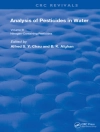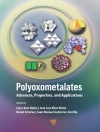With its focus on emerging concerns of kinase and GPCR-mediated antitarget effects, this vital reference for drug developers addresses one of the hot topics in drug safety now and in future.
Divided into three major parts, the first section deals with novel technologies and includes the utility of adverse event reports to drug discovery, the translational aspects of preclinical safety findings, broader computational prediction of drug side-effects, and a description of the serotonergic system. The main part of the book looks at some of the most common antitarget-mediated side effects, focusing on hepatotoxicity in drug safety, cardiovascular toxicity and signaling effects via kinase and GPCR anti-targets. In the final section, several case studies of recently developed drugs illustrate how to prevent anti-target effects and how big pharma deals with them if they occur. The more recent field of systems pharmacology has gained prominence and this is reflected in chapters dedicated to the utility in deciphering and modeling anti-targets. The final chapter is concerned with those compounds that inadvertently elicit CNS mediated adverse events, including a pragmatic description of ways to mitigate these types of safety risks.
Written as a companion to the successful book on antitargets by Vaz and Klabunde, this new volume focuses on recent progress and new classes, methods and case studies that were not previously covered.
Spis treści
List of Contributors XV
Preface XXI
A Personal Foreword XXIII
Section 1 General Concept for Target-based Safety Assessment 1
1 Side Effects of Marketed Drugs: The Utility and Pitfalls of Pharmacovigilance 3
Steven Whitebread, Mateusz Maciejewski, Alexander Fekete, Eugen Lounkine, and László Urbán
1.1 Introduction 3
1.2 Postmarketing Pharmacovigilance 6
1.3 Polypharmacy and Pharmacological Promiscuity of Marketed Drugs 9
References 15
2 In Silico Prediction of Drug Side Effects 19
Michael J. Keiser
2.1 Large-Scale Prediction of Drug Activity 20
2.1.1 Networks of Known and New Target Activity 21
2.1.2 Resources for Multiscale Inquiry 25
2.2 Multiscale Models of Adverse Drug Reactions 30
2.2.1 Inferring Adverse Reactions 31
2.2.2 Forward Perturbation and Prediction of Mechanisms 33
References 36
3 Translational Value of Preclinical Safety Assessment: System Organ Class (SOC) Representation of Off-Targets 45
Mateusz Maciejewski, Eugen Lounkine, Andreas Hartmann, Steven Whitebread, and László Urbán
3.1 Introduction 45
3.2 Terminology: Medicinal Dictionary for Regulatory Activities (Med DRA) 46
3.2.1 Correct Use of Med DRA Terminology at Different Phases of Drug Discovery 48
3.2.2 Determination of Symptoms Associated with a Target 50
3.3 Data Interpretation: Modifying Factors 52
3.3.1 Access to Organs 52
3.3.2 Off-Target Promiscuity: Target Interactions (Synergies and Antagonism) 53
3.4 Conclusions 53
References 54
4 Pathological Conditions Associated with the Disturbance of the 5-HT System 57
Daniel Hoyer
4.1 Introduction 57
4.2 From “St. Anthony’s Fire” to Ergot Alkaloids, the Serotonin Syndrome, and Modern 5-HT Pharmacology 59
4.3 Appetite-Reducing Agents, Fenfluramine, and Other 5-HT Releasers 61
4.4 Gastrointestinal and Antiemetic Indications, the 5-HT3/5-HT4 Receptor Links 63
4.5 Antipsychotics and the 5-HT2/Dopamine D2 Link (and Many Other 5-HT Receptors) 65
4.6 Antimigraine Medications of Old and New and the 5-HT1B/1D Receptors 67
4.7 Antidepressants/Anxiolytics Acting at 5-HT and Other Transporters 69
4.8 Conclusions 71
References 72
Section 2 Hepatic Side Effects 81
5 Drug-Induced Liver Injury: Clinical and Diagnostic Aspects 83
John R. Senior
5.1 Introduction 83
5.1.1 Postmarketing Hepatotoxicity versus Hepatotoxicity in Development 84
5.1.2 Isoniazid – If It Were Newly Discovered, Would It Be Approved Today? 85
5.2 Special Problems of Postmarketing Hepatotoxicity 89
5.2.1 Voluntary Monitoring after Approval for Marketing 90
5.2.2 Prediction of Serious, Dysfunctional Liver Injury 90
5.2.3 Severity of Liver Injury Is Not Measured by Aminotransferase Elevations 91
5.2.4 Attempts to Standardize Terminology 91
5.2.5 What Is the “Normal” Range, or the “Upper Limit of Normal”? 92
5.2.6 Diagnostic Test Evaluation 93
5.2.7 Determination of the Likely Cause of Liver Abnormalities 94
5.2.8 Treatment and Management of DILI in Practice 95
5.3 Special Problems for New Drug Development 95
5.3.1 How Many? 95
5.3.2 How Much? 96
5.3.3 How Soon? 97
5.3.4 How Likely? 97
5.3.5 Compared with What? 97
5.3.6 ROC Curves 98
5.3.7 e DISH: Especially for Controlled Trials 99
5.3.8 Test Validation and Qualification 100
5.4 Closing Considerations 101
5.4.1 A Handful of “Do Nots” 101
5.4.2 Need to Standardize ALT Measurement and Interpretation of Normal Ranges 102
5.4.3 Research Opportunities 102
References 103
6 Mechanistic Safety Biomarkers for Drug-Induced Liver Injury 107
Daniel J. Antoine
6.1 Introduction 107
6.2 Drug-Induced Toxicity and the Liver 110
6.3 Current Status of Biomarkers for the Assessment of DILI 111
6.4 Novel Investigational Biomarkers for DILI 113
6.4.1 Glutamate Dehydrogenase (GLDH) 114
6.4.2 Acylcarnitines 115
6.4.3 High-Mobility Group Box-1 (HMGB1) 116
6.4.4 Keratin 18 (K18) 116
6.4.5 Micro RNA-122 (mi R-122) 117
6.5 Conclusions and Future Perspectives 118
References 120
7 In Vitro Models for the Prediction of Drug-Induced Liver Injury in Lead Discovery 125
Frederic Moulin and Oliver Flint
7.1 Introduction 125
7.2 Simple Systems for the Detection and Investigation of Hepatic Toxicants 130
7.2.1 Primary Hepatocytes 130
7.2.2 Liver-Derived Cell Lines 135
7.2.3 Differentiated Pluripotent Stem Cells 137
7.3 Models to Mitigate Hepatocyte Dedifferentiation 140
7.3.1 Liver Slices 140
7.3.2 Selective Engineering of Metabolism 141
7.4 Understanding Immune-Mediated Hepatotoxicity 144
7.4.1 Use of Inflammatory Cofactors 145
7.4.2 Innate Immune System and Inflammasome 147
7.5 Conclusions 148
References 149
8 Transporters in the Liver 159
Bruno Stieger and Gerd A. Kullak-Ublick
8.1 Introduction 159
8.2 Role of Organic Anion Transporters for Drug Uptake 159
8.3 Drug Interaction with the Bile Salt Export Pump 160
8.4 Susceptibility Factors for Drug–BSEP Interactions 161
8.5 Role of BSEP in Drug Development 162
References 163
9 Mechanistic Modeling of Drug-Induced Liver Injury (DILI) 173
Kyunghee Yang, Jeffrey L. Woodhead, Lisl K. Shoda, Yuching Yang, Paul B. Watkins, Kim L.R. Brouwer, Brett A. Howell, and Scott Q. Siler
9.1 Introduction 173
9.2 Mechanistic Modules in DILIsym?D version 3A 175
9.2.1 Oxidative Stress-Mediated Toxicity 175
9.2.2 Innate Immune Responses 178
9.2.3 Mitochondrial Toxicity 179
9.2.4 Bile Acid-Mediated Toxicity 181
9.3 Examples of Bile Acid-Mediated Toxicity Module 184
9.3.1 Troglitazone and Pioglitazone 184
9.3.2 Bosentan and Telmisartan 187
9.4 Conclusions and Future Directions 190
References 191
Section 3 Cardiovascular Side Effects 199
10 Functional Cardiac Safety Evaluation of Novel Therapeutics 201
Jean-Pierre Valentin, Brian Guth, Robert L. Hamlin, Pierre Lainée, Dusty Sarazan, and Matt Skinner
10.1 Introduction: What Is the Issue? 201
10.2 Cardiac Function: Definitions and General Principles 203
10.2.1 Definition and Importance of Inotropy and Difference from Ventricular Function 203
10.2.2 Definition and Importance of Lusitropy 207
10.2.3 Components and Importance of the Systemic Arterial Pressure 211
10.3 Methods Available to Assess Cardiac Function 213
10.4 What Do We Know About the Translation of the Nonclinical Findings to Humans? 217
10.5 Risk Assessment 219
10.5.1 Hazard Identification 219
10.5.2 Risk Assessment 221
10.5.3 Risk Management 224
10.5.4 Risk Mitigation 225
10.6 Summary, Recommendations, and Conclusions 227
References 228
11 Safety Aspects of the Cav1.2 Channel 235
Berengere Dumotier and Martin Traebert
11.1 Introduction 235
11.2 Structure of Cav1.2 Channels 235
11.2.1 α-Subunit of Cav1.2 Channel 236
11.2.2 β-Subunit of Cav1.2 Channel 236
11.3 Function of Cav1.2 Channels in Cardiac Tissue 237
11.3.1 Role in Conduction and Contractility 239
11.3.2 Modulation of Cav1.2 Channels 240
11.3.3 Cav1.2 and Cardiac Diseases 244
11.4 Pharmacology of Cav1.2 Channels: Translation to the Clinic 245
11.4.1 Cav1.2 Antagonists: Impact on Electromechanical Functions 245
11.5 Prediction of Cav1.2 Off-Target Liability 246
11.5.1 Cav1.2 in Cardiomyocytes Derived from i PS Cells 246
References 247
12 Cardiac Sodium Current (Nav1.5) 253
Gary Gintant
12.1 Background and Scope 253
12.2 Structure and Function 255
12.2.1 Molecular Biology 255
12.2.2 SCN5A Mutations Related to Congenital Long QT Syndromes 256
12.2.3 Evidence for Multiple Functional Types of Cardiac Sodium Channels and Heterogeneous Distribution 257
12.3 Physiological Role and Drug Actions 258
12.3.1 Fast Sodium Current (INa F): Conduction and Refractoriness 258
12.3.2 Late (or Residual or Slow) Sodium Current (INa L) 259
12.3.3 Drug Effects on INa F 261
12.3.4 Indirect Modulation of INa F 264
12.4 Methodology 265
12.4.1 Use of Human Stem Cell-Derived Cardiomyocytes 266
12.5 Translation of Effects on INa F: Relation to Conduction Velocity and Proarrhythmia 268
12.6 Conclusions 269
References 270
13 Circulating Biomarkers for Drug-Induced Cardiotoxicity: Reverse Translation from Patients to Nonclinical Species 279
Gül Erdemli, Haisong Ju, and Sarita Pereira
13.1 Introduction 279
13.2 Cardiac Troponins 280
13.3 Natriuretic Peptides 282
13.4 Novel/Exploratory Biomarkers: H-FABP, mi RNA, and Genomic Biomarkers 285
13.5 Regulatory Perspective 286
13.6 Conclusions and Future Perspectives 288
References 289
14 The Mechanistic Basis of h ERG Blockade and the Proarrhythmic Effects Thereof 295
Robert A. Pearlstein, K. Andrew Mac Cannell, Qi-Ying Hu, Ramy Farid, and José S. Duca
14.1 Introduction 295
14.1.1 The Role of h ERG Dysfunction/Blockade in Promoting Early After Depolarizations 296
14.1.2 The Dynamics of h ERG Blockade 301
14.1.3 Simulations of the Human Cardiac AP in the Presence of h ERG Blockade 303
14.1.4 Estimation of Proarrhythmic h ERG Occupancy Levels Based on AP Simulations 304
14.1.5 Novel Insights about the Causes of Inadvertent h ERG Binding Function 305
14.1.6 Implications of Our Findings for h ERG Safety Assessment 313
14.1.7 Conclusion and Future Directions 324
References 324
Section 4 Kinase Antitargets 329
15 Introduction to Kinase Antitargets 331
Mark C. Munson
References 360
16 Clinical and Nonclinical Adverse Effects of Kinase Inhibitors 365
Douglas A. Keller, Richard J. Brennan, and Karen L. Leach
16.1 Introduction 365
16.2 Perspectives on the Clinical Safety of Kinase Inhibitor Therapy 371
16.3 Adverse Effects of Kinase Inhibitor Drugs 372
16.3.1 Hepatic Toxicity 372
16.3.2 Thyroid Toxicity 377
16.3.3 Bone and Tooth Toxicity 379
16.3.4 Cardiovascular Toxicity 380
16.3.5 Cutaneous Toxicity 380
16.3.6 Developmental and Reproductive Toxicity 383
16.3.7 Gastrointestinal Toxicity 385
16.3.8 Hematopoietic Toxicity 385
16.3.9 Ocular Toxicity 387
16.3.10 Pulmonary Toxicity 388
16.3.11 Renal Toxicity 389
16.4 Derisking Strategies for Kinase Inhibitor Toxicity 389
16.5 Concluding Remarks 391
References 391
17 Cardiac Side Effects Associated with Kinase Proteins and Their Signaling Pathways 401
Roy J. Vaz and Vinod F. Patel
17.1 A Case Study 401
17.2 Introduction 402
17.3 Cardiac-Specific Kinase Antitargets 404
17.3.1 Preclinical Findings in Genetically Modified or KI-Treated Mice 404
17.3.2 Clinical Findings of Kinase Inhibitors on the Heart and Their Mechanistic Understandings 404
17.4 Current and Future Directions 409
17.4.1 Preclinical Safety and Clinical Outcome Predictions 409
17.5 Conclusions 410
References 411
18 Case Studies: Selective Inhibitors of Protein Kinases – Exploiting Demure Features 413
Ellen R. Laird
18.1 Introduction 413
18.2 Case I: Indane Oximes as Selective B-Raf Inhibitors 414
18.3 Case II: ARRY-380 (ONT-380) – an Erb B2 Agent that Spares EGFR 420
18.4 Case III: Discovery of GDC-0068 (Ipatasertib), a Potent and Selective ATP-Competitive Inhibitor of AKT 424
18.5 Concluding Remarks 428
References 429
Section 5 Examples of Clinical Translation 435
19 Torcetrapib and Dalcetrapib Safety: Relevance of Preclinical In Vitro and In Vivo Models 437
Eric J. Niesor, Andrea Greiter-Wilke, and Lutz Müller
19.1 Introduction 437
19.2 Effect of Torcetrapib on Blood Pressure 437
19.3 In Vitro Studies 438
19.3.1 Direct Effect of Torcetrapib on Aldosterone Production In Vitro in Cultured H295R Adrenal Corticocarcinoma Cells 439
19.3.2 Molecular Mechanism of Torcetrapib Induction of Aldosterone Secretion 439
19.3.3 Development of Reproducible In Vitro Screening Models for Increase in Aldosterone and Cyp11B2 m RNA in a Human Adrenal Corticocarcinoma Cell Line 440
19.3.4 Application of In Vitro Models for the Successful Derisking of Dalcetrapib, Anacetrapib, and Evacetrapib 440
19.4 In Vivo Studies 441
19.4.1 Effect of Torcetrapib on Aldosterone and BP 441
19.4.2 Molecular Mechanisms of Torcetrapib-Induced BP Increase 444
19.5 General Safety Risk with Increased Aldosterone and BP 447
19.5.1 Inappropriate Increase in Aldosterone Secretion May Increase CV Risks 447
19.6 Relevance of BP and Aldosterone Preclinical Models to Clinical Observation with Dalcetrapib and Anacetrapib 448
19.7 Similarities between Potent CETPi and Halogenated Hydrocarbons 449
19.7.1 The Macrophage Scavenger Receptor MARCO, a Possible Antitarget for Dalcetrapib, and Its Relevance to Humans 450
19.8 Conclusions 451
References 451
20 Targets Associated with Drug-Related Suicidal Ideation and Behavior 457
Andreas Hartmann, Steven Whitebread, Jacques Hamon, Alexander Fekete, Christian Trendelenburg, Patrick Y. Müller, and László Urbán
20.1 Introduction 457
20.2 Targets Associated with Increased Suicidal Intent and Behavior 458
20.2.1 G-Protein-Coupled Receptors 458
20.2.2 Transporters 466
20.2.3 Ion Channels 469
20.3 Conclusions 472
References 473
Index 479
O autorze
Laszlo Urban received his MD and Ph D in neurophysiology/neuropharmacology in Hungary, and was visiting professor at Duke University between 1987 and 1989. He is currently global head of Preclinical Safety Profiling at the Novartis Institutes for Biomedical Research, Cambridge, USA, and was previously the Deputy Head of the Novartis Institute for Medical Sciences in London, UK. Dr. Urban has over 130 scientific articles, book chapters and patents to his name.
Roy J. Vaz received his Ph D in organic chemistry from the University of Florida, Gainesville, an MBA from the University of Illinois, and most recently an MS in molecular biology from Lehigh University, USA. He is currently a senior distinguished scientist at Sanofi Pharmaceuticals in Waltham, MA, and was previously Director of the Investigative Product Optimization department under Aventis. He has worked at Bristol-Myers Squibb as Principal Scientist as well as at Tripos, Inc, as a research scientist. Dr. Vaz has authored or co-authored around 45 publications in peer-reviewed journals, eight book chapters and several patents.
Vinod Patel gained his BSc in applied chemistry from Leicester Polytechnic, and a Ph D in synthetic organic chemistry from Nottingham University, UK. He took up a post-doctoral fellowship at the University of Rochester, NY, USA, before joining Eli Lilly & Company, where he spent the next nine years as a medicinal chemist in the oncology division. He then joined Kinetix Pharmaceuticals, which was acquired by Amgen and Dr. Patel joined their new Cambridge facility as head of medicinal chemistry. In 2011, he joined Sanofi oncology research as head of medicinal chemistry where he is currently head of chemical research in lead generation candidate realization. Dr. Patel has over 50 publications and some 50 patents to his name.












